- Home
- James A. Michener
The Source Page 4
The Source Read online
Page 4
The main photograph showed a distinguished-looking elderly scholar recoiling from the menorah in horror. The caption read: “Dr. Gheorghe Moscowitz, renowned archaeologist, says, ‘This evil piece may well doom all who possess it, for it bears the curse of death.’ ”
Cullinane groaned and did something he rarely did. He swore. “Who in hell is Dr. Gheorghe Moscowitz?”
Tabari said, “He’s that nice old Rumanian who sweeps up.”
“Get him in here,” Cullinane snapped, but when the kibbutznik appeared, soft-spoken and apprehensive, Tabari took over.
“This you in the picture?”
“Dr. Cullinane was standing there when the man took it.”
Cullinane studied the picture and said, “I don’t remember you looking that way.”
“Just before the man took the picture he made a face at me,” the Rumanian explained. “I jumped back.”
“But surely you didn’t say anything about a ‘curse of death’?”
“No. But as the man was going to his car he called me over and asked if I thought a candlestick could carry a curse, and to get rid of him I said, ‘Maybe.’ ”
That afternoon the first excursionists stopped at the tell, asking to see the Candlestick of Death, and the next morning a tour bus arrived. Cullinane was distressed and sought out Eliav, to whom he said, “I’ve worked hard to protect the good name of this dig. Six of the applicants who volunteered to help us were publicity hounds, and I kept them off. Like Stikkler of Geneva.”
“We saw your sensible interview when the Chicago reporter wanted you to say that you were expecting to dig up new revelations about the Bible.” Eliav lit his pipe.
“And yet we are digging among the foundations of three great religions. We’ve got to keep it clean.”
“Do you expect to find materials relating to Christianity?” Eliav asked.
“Materials? You mean manuscripts … proofs? No. But insights? Yes.” The two men fell silent, and after a while Cullinane asked, “As a Jew, don’t you hope to find something that will illuminate …”
“Why do you suppose I work on these digs?” Eliav asked. “Each time I sink a pick into the earth, I hope, in a vague sort of way, to turn up something that will tell me more about Judaism.” He hesitated. “No, that’s wrong. Not tell me. Tell the world. Because the world needs to know.”
The responsibility of the task on which the two men were engaged caused them to look with disgust on the newspaper stories, for although neither expected to uncover specific new materials relating to Judaism or Christianity or Islam, each hoped that Makor might provide some serious information which would advance understanding of the societies in which these religions arose. “From now on we keep newspapermen and tourists out of here,” Cullinane concluded, but even as he spoke, Tabari appeared with a cable from Chicago:
CULLINANE STOP REGARDLESS OF WHAT OTHER FINDS THE ISRAELI GOVERNMENT MAY DEMAND FOR ITSELF IT IS IMPERATIVE THAT YOU SECURE CANDLESTICK OF DEATH FOR CHICAGO PAUL J. ZODMAN
Cullinane shook his head and gave Tabari the job of reassuring Zodman that it would be arranged. Chicago would get the treasure.
On the next day such trivia were forgotten, for Eliav reported that workmen in Trench B had uncovered positive proof that they were digging in Crusader ruins. “An inscription which can be dated 1105 C.E. John, it looks as if we’ve hit the castle!”
As word of the discovery sped through the kibbutz, a strange thing happened: clerks counting eggs, cooks at work in the kitchen, boys in school and the volunteers from the various countries stopped what they were doing and hurried silently to the tell, where they stood in expectant groups, watching as the archaeologists tapped gingerly at pebbles while girls with brushes cleared away the debris. From thousands of miles away men had come to probe into the secrets of the tell and at this hour they had struck a significant thing. It was a magnificent moment.
But so many spectators crowded the edges of Trench B that Tabari had to move them back, lest the sides collapse; and as the crowd withdrew, ten of the stronger workmen jumped down to haul away the last of the rubble. But the rock bearing the inscription they did not touch, for it would first have to be photographed in situ and then sketched by the camp draftsman in the precise position in which it was found, because from such photographs and drawings some imaginative theorist who had never seen Makor might construct an explanation which would illuminate a whole period of history. When the pictures were taken, Tabari called his workmen out of the trench and spectators were allowed to file in and see for themselves the first major find at Makor. Cullinane waited his turn, and when he saw the beautiful old stone, carved so carefully by some medieval guildsman, he experienced a rush of joy. The castle existed! The first stage of the dig was a success, and in succeeding years the beautiful ruins could be leisurely explored. In the meantime he filled out the provisional card.
When Tabari saw the date he objected, pointing out that in this instance the stone could be ascribed with finality to the year 1105 C.E. because there was documentary evidence in Wenzel of Trier’s Chronicle that Count Volkmar of Gretz had died that year, but Cullinane observed dryly, “We know when he died, but we don’t know when the stone was carved and let into the wall. More likely around the date I suggest.”
An unfortunate atmosphere now developed at the dig, the kind of thing an experienced administrator tries to forestall; nothing of even minor importance had been uncovered at A, so that the team working at that site began to lose spirit, while the gang at B greeted each morning eagerly, wondering what evidence they would lay bare that day: perhaps Crusader dining plates decorated with fish, pieces of chain armor, carved fragments from a chapel, dozens of stones which could impart a very real sense of a castle in which knights had lived and from which they had gone out to fight. During one period of three weeks in June, the diggers found stones that were heavily charred—even cracked apart by some forgotten heat—and they speculated on what accident could have built up a blaze so great as to scar a whole section of castle. Digging at Trench B in those days was an exciting experience, and if one wanted a good example of the manner in which archaeology could uncover lost secrets it was there.
At the same time Trench A showed how a dig could go wrong, for it had obviously missed the main gate. After weeks of disappointing excavation Cullinane assembled his crew at the barren trench and asked, “What’s to do?” Eliav now admitted that the gate must stand well to the east, where Cullinane had suggested in the first place, and he advised abandoning the disappointing trench and transferring operations seventy yards eastward, but Cullinane said no: “At Trench B we’ve found the castle, and if the rest of the tell is unproductive we need to know that too.” To the disappointment of the Trench A kibbutzniks he ordered them to go ahead as planned, trying to convince them that “what you’re doing here is just as important as what they’re doing over there.” He found this a difficult thesis to defend.
So the gang at Trench A plodded through the unrewarding rubble until by brute strength they had thrown out enough soil to lay bare the three concentric walls that had guarded Makor. Sometime around 3500 B.C.E. men not yet identified had built the thick outer wall by throwing together huge stones in haphazard piles. Two thousand years later, well before the age of Saul and Solomon, some other unidentified group had built the sturdy middle wall. And two thousand five hundred years after that, at the time of the Crusaders, the inner wall had been erected, and it was a European masterpiece. How it had been penetrated and what part the castle fire had played in its destruction Cullinane, as a scientist, refused to guess. He supposed that after the completion of this final wall the sloping flanks had been repaved with rock, the most recent construction on the tell, a mere eight hundred years old. Attacking Makor could never have been a simple undertaking. Cullinane, visualizing the plateau crouched within the triple walls—they did not stand, of course, in three separated rings; all were crumbled and each grew out of its predecessor, but each also existed in it
s own unique construction—told the others, “All we’re looking for occurred within this little stone cocoon. We’ve laid bare the pattern but not the significance.”
And then in quick succession, some distance inside the inner wall, the diggers at Trench A came up with three finds, none so spectacular as the remnants of the castle but all of a nature that sent the history of Makor rocketing backwards, so that after these items were appraised by the scholars the balance between the trenches was restored, and the hidden secrets of the mound began to unfold in an orderly pattern. The first find was merely a piece of limestone intricately carved in a manner no Jew or Christian would adopt; it was obviously of Muslim origin, a poetic decoration for a mosque—but on its face some later Christian hand had imposed a panel with five crosses.
The experts now focused on Trench A, where a picture of chronological confusion developed, indicated by interrupted building lines and broken foundations. The Muslim stone proved that either a mosque or part of a building used as a mosque had once stood in this area, but that later Christians had converted it into a church. However, as the diggers probed deeper, it became clear that the significant building had been a great Byzantine basilica with a mosaic floor, and Cullinane dug with increasing excitement, hoping to uncover some kind of substantial proof that Makor had owned one of the early Christian churches of the Galilee; but it was Tabari who finally brushed away a pile of dust to reveal a handsome stone on which had been carved a set of three crosses in bas-relief.
When he climbed out of the trench, Eliav went down with the photographer for a series of shots of the stone in situ, for it was essential to record where it had stood and how it had fitted into the wall, especially since the stone was lodged in a section which seemed to have been built and rebuilt several times: whether it had formed part of the mosque could not now be determined; only later excavation would establish the relationships. But as Eliav brushed away some earth so that the camera could catch a shadow showing how the rock abutted onto those above and below, some irregularity on the upper surface of the stone caught his practiced eye and he asked for a small pick and a brush. With these implements he dislodged the dust, sixteen hundred years old, that had sifted in between stones, and he satisfied himself that he had come upon something of great moment. Without speaking, he made way for the photographer, and walked slowly over to where Cullinane was showing his sketch to Vered Bar-El and Tabari. Taking the card, Eliav said quietly, “I’m afraid you’ve some more work to do on this one, John.”
“What do you mean?”
Eliav looked soberly at his colleagues. “The kind of thing we dream about,” he said.
The other three experts lined up behind him as he led the way back to the trench. No one spoke, but at the newly found stone Cullinane asked the photographer to retire, then fell on his hands and knees to peer into the dusty space a quarter of an inch high. When he rose his eyes were alight, and Dr. Bar-El and Tabari, when they saw what Eliav had partially uncovered, reacted in the same way.
“I want the draftsman down here right away,” Cullinane called. There were only a few hours of good light left, and he directed her to sketch from all angles the Christian rock with its stalwart crosses. At the same time the photographer was directed to shoot the rock lavishly, after which they would pull out the stone to inspect the hidden face; but in spite of the urgency that communicated itself throughout the dig, it became apparent that the remaining hours of that day would have to be spent in drawing. Any further work on the rock must wait till next morning.
“We could do it under lights,” Tabari suggested, but this Eliav quickly vetoed, and as darkness fell a sense of deep excitement settled over Makor.
At dinner the older kibbutzniks were as pleased as the youngsters who worked at the dig, partly because every family in Israel had at least one amateur archaeologist—rare was the house that had no flints, no pottery, no echoes of the past—and partly because everyone in the kibbutz thought of the work as “his dig.” “I hear we hit something big today,” one of the serving men said to Cullinane. The Irishman’s eyes were too bright for him to deny his excitement.
“We found the cornerstone of a Christian church,” Cullinane replied. “Great day for the Irish.”
“But that running around at the end?” the man asked. “What was it about?” He propped his tray on the table, leaning on it as if he were the owner of a restaurant.
“We don’t know,” Cullinane said.
“Can’t you guess?” the kibbutznik demanded.
“We’ll guess tomorrow,” Cullinane replied. He was becoming irritated with this man.
But the young fellow said, “Could we come up and watch?” and Cullinane became aware that eight or nine of the kitchen staff had crowded about his chair, eager to know what was happening on their tell.
“All right,” Cullinane said. “Be there at six.” And as day started, more than a hundred persons lined the trench, watching silently as the four senior archaeologists descended to work on the Christian stone. “You have enough photographs?” Cullinane asked the English cameraman.
“Developed them last night. All okay.”
“You have enough sketches?” The young woman nodded, so Tabari began working cautiously along the edges of the rock, but it could not be moved.
“We’ll have to take out those layers on top,” Eliav suggested, and to do this required the better part of an hour. None of the watchers left.
The important stone now stood with only one large rock bearing down upon it, and Cullinane called the photographer in for a final series of shots, after which he and Eliav began to lift the obstructing stone with crowbars. Slowly they raised the ancient burden until Tabari, peering into the dusty darkness, could see the surface about to be exposed. “It’s there!” he shouted, and Dr. Bar-El, looking over his shoulder, whispered, “My God! It’s perfect.”
They took away the cover stone, then brushed the dust from the long-hidden surface to display the carving of a little flat wagon with funny flat-sided wheels bearing a house with a curved roof, guarded by palm trees. The archaeologists stood back so that the kibbutzniks could see the treasure, but no one spoke.
Finally Eliav said, “It’s a great day for the Jews,” for this was a folklore representation of the flat wagon bearing the wooden Ark of the Covenant in which the tablets of the Ten Commandments were supposed to have been carried from Mount Sinai to the Promised Land. Originally this stone must have enjoyed a place of honor in the synagogue of Makor, but when that structure was torn down by the victorious Christians, some workman had carved his three crosses on a different face, while the vanquished Jewish side was cemented into the darkness of the basilica. To have the Jewish symbols exposed now, before Jews who had returned from exile to build their kibbutz near the ancient site, constituted a luminous moment; and Dr. Cullinane, happening to look up from the trench, saw that some of the older kibbutzniks had tears in their eyes. With deep pleasure he modified his earlier drawing and filed it.
Almost before he was finished, a workman found a coin that completed the violent sequence of that period: Roman temple, synagogue, basilica, mosque, church … all equally collapsed into a shared destruction.
Cullinane allowed the stone and the coin to be exhibited at the kibbutz for some days, and grave-faced Jews stood before them looking first at their long-buried ark but staring mostly at the hard face of Vespasian, whose armies had destroyed their temple, and at the figure of Judaea Capta as she mourned in humiliation under the palm tree. It was one of the most beautiful coins ever issued, this flawless union of imperial force and tribute sorrow, and it fascinated the modern Jews whose history it summarized. Cullinane, himself deeply affected by the three emotionally related finds, cabled Paul Zodman:
THINGS HAPPENING VERY FAST STOP BETTER COME ON OVER
The relationship between the two trenches was now reversed, as often occurred at a dig. Trench B wallowed about in the foundations of the Crusader fort, whose walls cut deep through
many levels of occupation, obliterating them all and rendering them largely useless for contemporary study; the diggers in this trench now seemed mainly occupied with shifting heavy stones. But in Trench A, which transected the multiple religious structures, intellectual and archaeological activity was keen, and the reason for bringing along an architect from the University of Pennsylvania became clear. At the top the trench was only thirty feet wide and it had sloping sides, so the amount of wall exposed was never great, but by pecking away at the earth and guessing at what had stood on what, the architect could sometimes come up with clever deductions as to how the various jigsaw pieces had fitted together. He was a patient man who allowed the sweating kibbutzniks to stalk past him as if he did not count, but when they were through lifting and tugging he was there, on his knees, often with a whisk broom, trying to catch signs of how the stones had been dressed and whether they bore fragments of earlier cement, indicating a prior use in some other wall. The quality of this man’s imagination would determine what course the excavations would follow in future years, and the amount of information he could deduce from what to another man would be merely one line of rocks crossing another line, was surprising. Not one of the four top archaeologists at Makor could approach his proficiency in this specialized field.

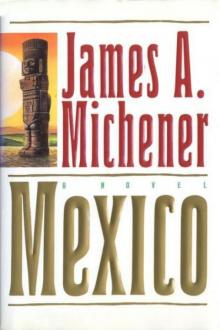 Mexico
Mexico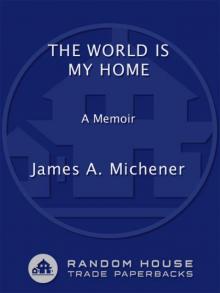 The World Is My Home: A Memoir
The World Is My Home: A Memoir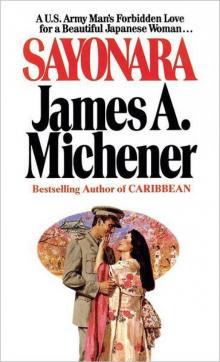 Sayonara
Sayonara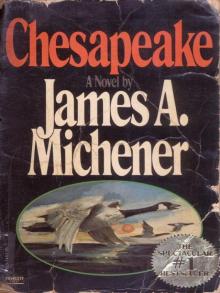 Chesapeake
Chesapeake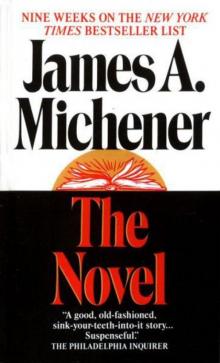 The Novel
The Novel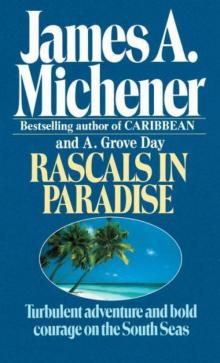 Rascals in Paradise
Rascals in Paradise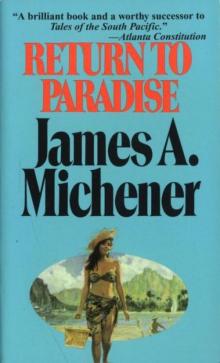 Return to Paradise
Return to Paradise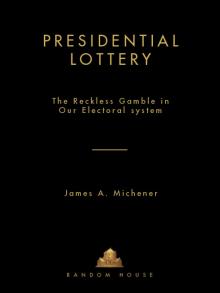 Presidential Lottery: The Reckless Gamble in Our Electoral System
Presidential Lottery: The Reckless Gamble in Our Electoral System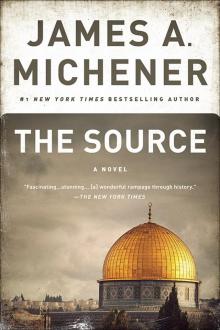 The Source
The Source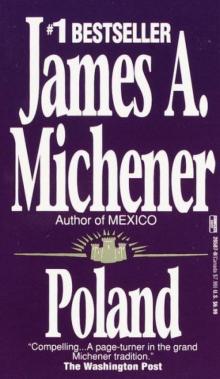 Poland
Poland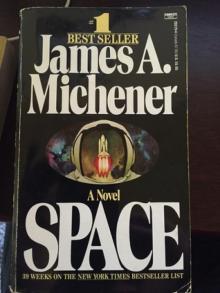 Space
Space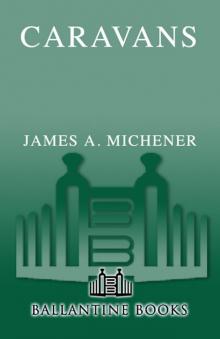 Caravans
Caravans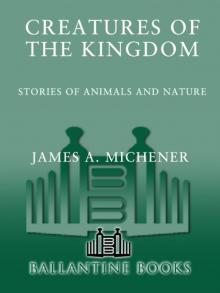 Creatures of the Kingdom: Stories of Animals and Nature
Creatures of the Kingdom: Stories of Animals and Nature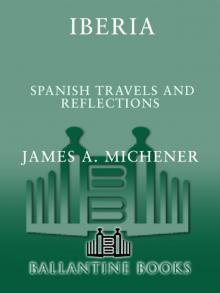 Iberia
Iberia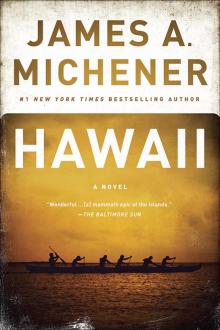 Hawaii
Hawaii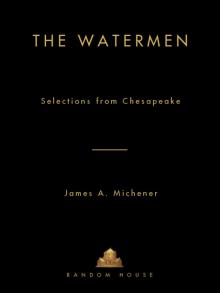 The Watermen: Selections From Chesapeake
The Watermen: Selections From Chesapeake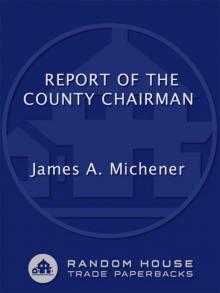 Report of the County Chairman
Report of the County Chairman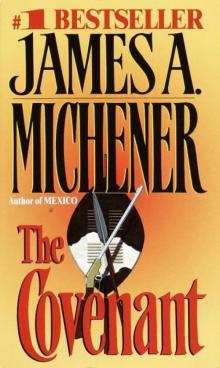 The Covenant
The Covenant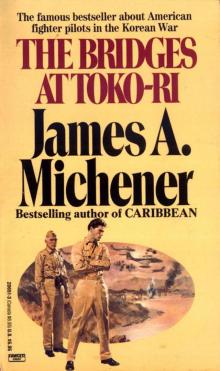 The Bridges at Toko-ri
The Bridges at Toko-ri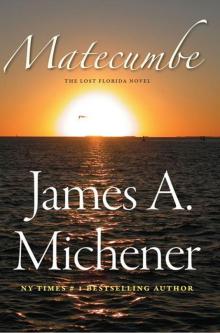 Matecumbe
Matecumbe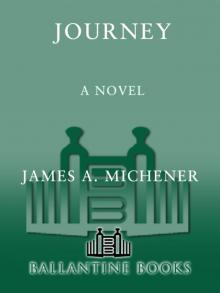 Journey: A Novel
Journey: A Novel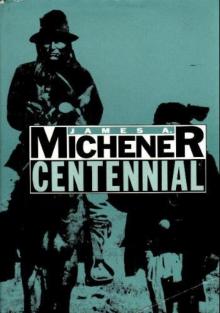 Centennial
Centennial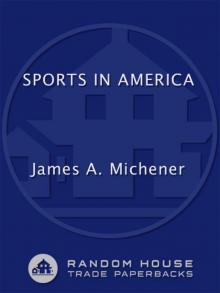 Sports in America
Sports in America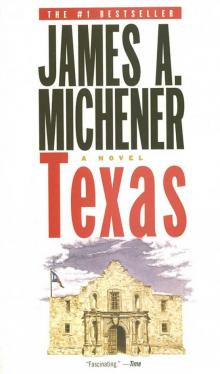 Texas
Texas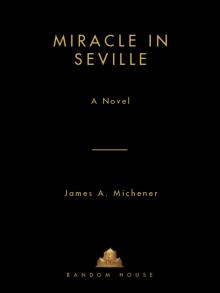 Miracle in Seville
Miracle in Seville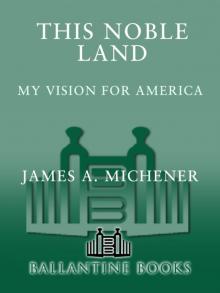 This Noble Land: My Vision for America
This Noble Land: My Vision for America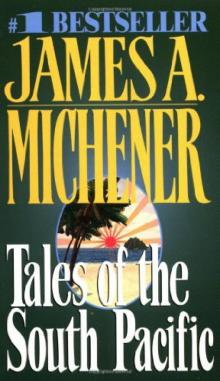 Tales of the South Pacific
Tales of the South Pacific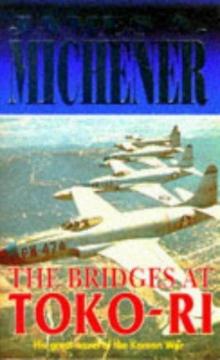 Bridges at Toko-Ri
Bridges at Toko-Ri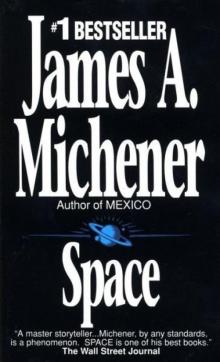 Space: A Novel
Space: A Novel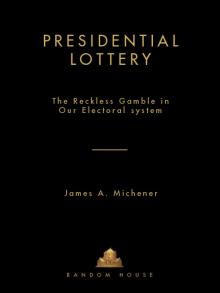 Presidential Lottery
Presidential Lottery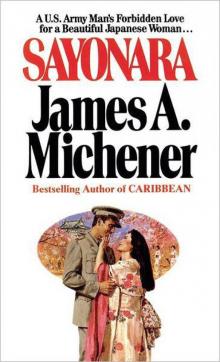 Sayonara: A Novel
Sayonara: A Novel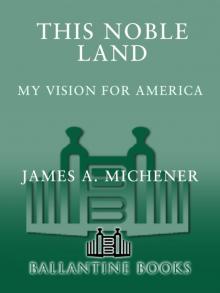 This Noble Land
This Noble Land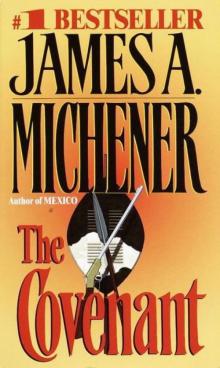 The Covenant: A Novel
The Covenant: A Novel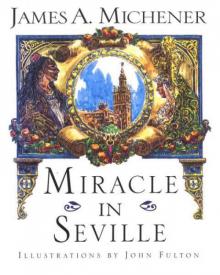 Miracle in Seville: A Novel
Miracle in Seville: A Novel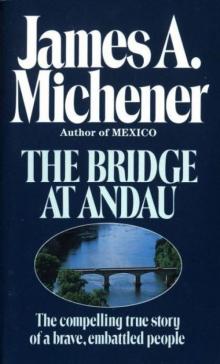 The Bridge at Andau
The Bridge at Andau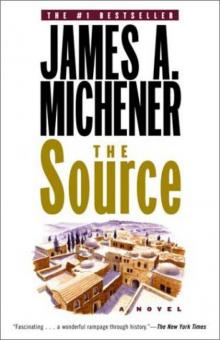 Source
Source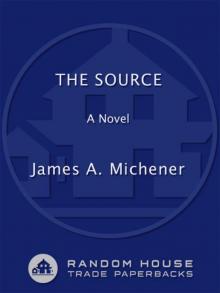 The Source: A Novel
The Source: A Novel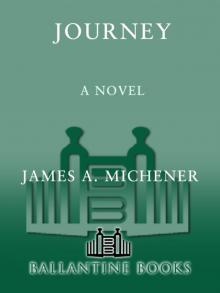 Journey
Journey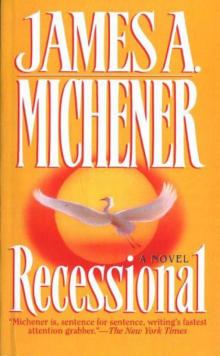 Recessional: A Novel
Recessional: A Novel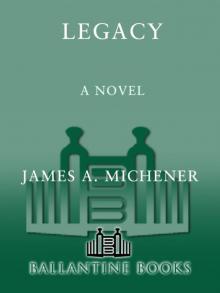 Legacy: A Novel
Legacy: A Novel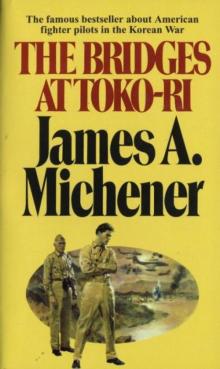 The Bridges at Toko-Ri: A Novel
The Bridges at Toko-Ri: A Novel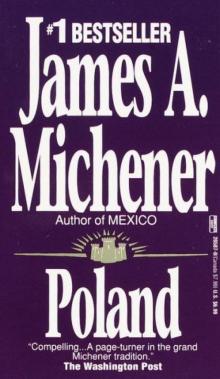 Poland: A Novel
Poland: A Novel